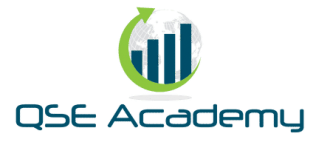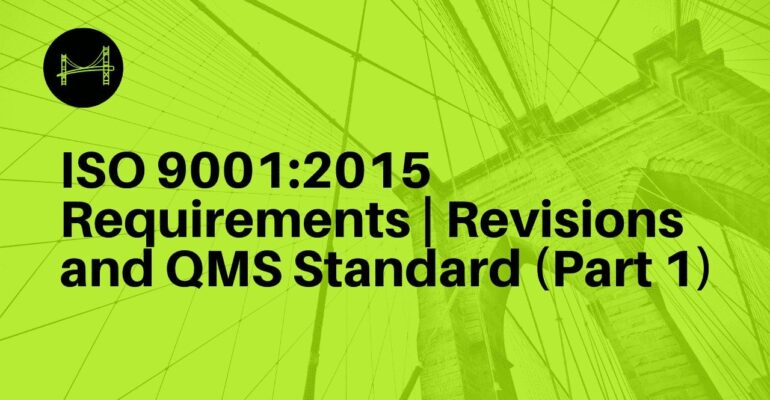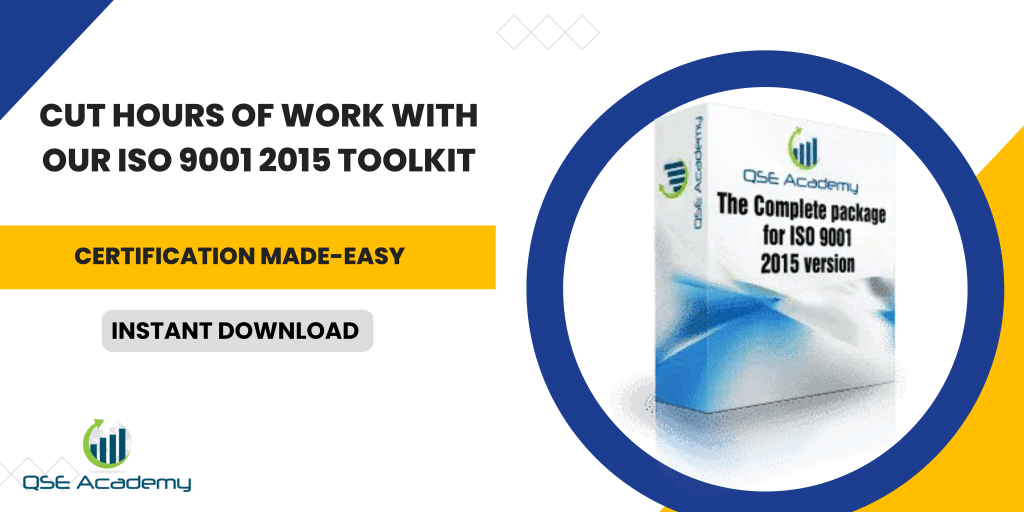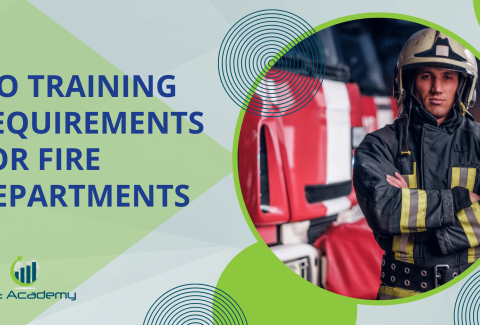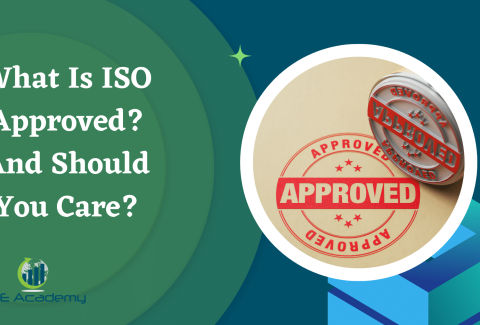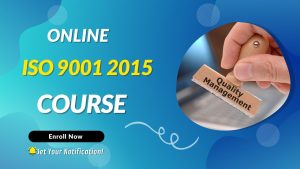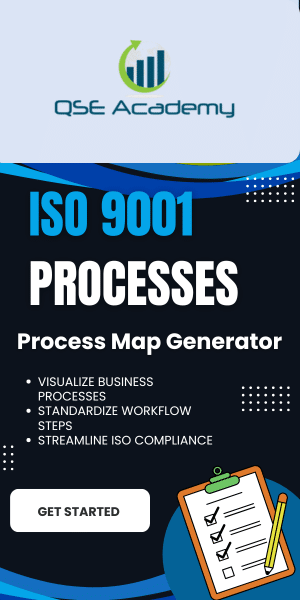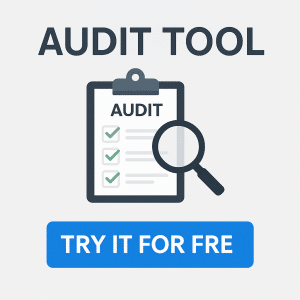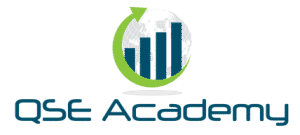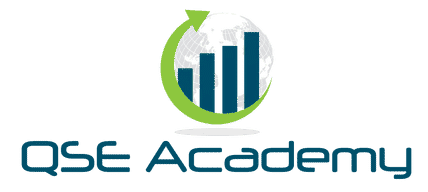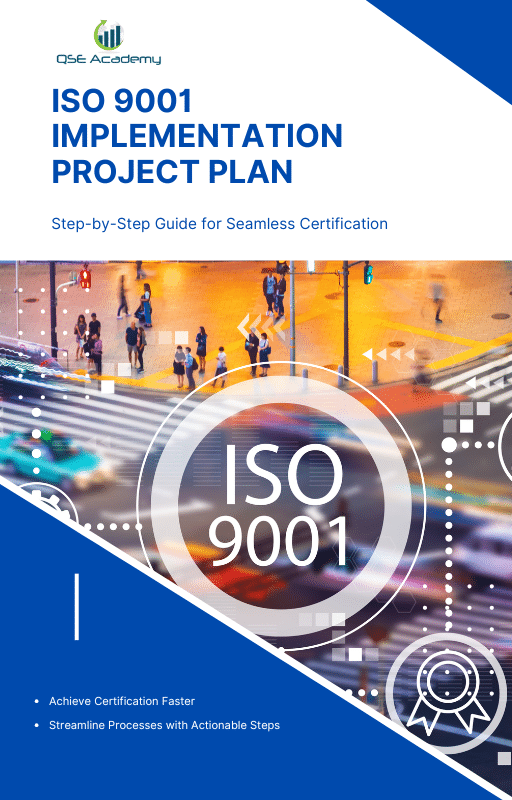ISO 9001 2015 Requirements (Part 1)
Last Updated on October 13, 2025 by Hafsa J.
ISO 9001 2015 Requirements (Part 1)
Most businesses think they know what ISO 9001 requires—until they sit down to implement it. That’s when the confusion starts.
I’ve worked with over 200 clients across food, industrial, and service sectors, and I can tell you this: reading the standard is one thing. Translating it into daily operations is another. The language feels abstract. The expectations aren’t always obvious. And the pressure to “get it right” for audits only adds to the overwhelm.
That’s why I created this guide.
If you’re managing quality, preparing for certification, or just trying to make sense of ISO 9001:2015—this is where you get clarity. I’ll walk you through every clause that actually matters (Clauses 4 through 10), explain what it means in plain language, and link you to deeper resources if you need them.
No jargon. No filler. Just a practical breakdown based on what I’ve seen work in the field.
Here’s what you’ll find inside:
-
A clause-by-clause walkthrough of ISO 9001:2015
-
Real-world insights on how to apply the requirements
-
Trusted tools and checklists to help you prepare for audits
By the end, you’ll have a clear understanding of what ISO 9001:2015 asks of you—and what it takes to meet those expectations with confidence.
Context of the Organization
This clause is where your ISO 9001 system starts taking shape. It’s not about documents. It’s about asking:
“What’s really going on in and around your business that affects quality?”
In my experience, companies that skip this step or treat it like a formality always end up with a QMS that feels disconnected from reality.
So let’s break it down.
Understanding the Organization and Its Context
You need to identify the internal and external issues that affect your ability to meet customer expectations and maintain consistent quality.
Real example:
One client in the food industry was dealing with a rise in supplier delays (external) and high staff turnover (internal). These were directly impacting product consistency—and we made sure their QMS addressed both.
What to consider:
-
Market conditions
-
Regulatory trends
-
Supply chain vulnerabilities
-
Workforce issues
-
New technologies or competitors
Tip: You’re not expected to fix everything—just to understand what matters and show that your QMS responds accordingly.
Understanding the Needs and Expectations of Interested Parties
This is where you map out who matters to your QMS—clients, regulators, suppliers, staff—and what they expect.
If you haven’t defined this clearly, your system won’t hold up under audit.
Interested Parties ISO 9001: How to Define and Manage Them
Determining the Scope of the QMS
You’re expected to clearly define what’s included in your quality management system—and just as importantly, what’s not.
Why this matters:
If you exclude activities (like design, for example), you need to justify it. And your scope should match your real operational footprint.
Mastering the Scope of ISO 9001: A Guide to Clause 4.3
Quality Management System and Its Processes
This is where ISO 9001 starts expecting you to think in terms of processes, not just departments.
You need to:
-
Identify your key processes (e.g., purchasing, production, customer service)
-
Define inputs, outputs, responsibilities, and performance measures
-
Ensure interaction between processes is clear
Pro insight:
The best-performing systems I’ve seen map processes visually (even on a whiteboard) before writing anything down. Keep it simple, understandable, and used—not just filed away.
Leadership
This clause is where ISO 9001 draws the line: either leadership is actively involved in the QMS, or the system won’t hold.
I’ve worked with companies where the quality manager handled “everything ISO,” while top management stayed on the sidelines. Every time, it led to friction, missed audits, or systems that existed only on paper.
Clause 5 fixes that by putting responsibility squarely on leadership’s shoulders.
Leadership and Commitment
Top management has to:
-
Demonstrate ownership of the QMS
-
Align quality goals with business strategy
-
Make sure resources are in place
-
Promote process-based thinking across the org
This doesn’t mean they run every quality meeting—but they need to be visibly invested. That means reviewing objectives, showing up for audits, and actually using the QMS to drive decisions.
In my experience, auditors often ask leadership direct questions like:
-
“What’s your quality strategy this year?”
-
“What risks have you prioritized?”
-
“How do you know if the system is working?”
If they can’t answer confidently, it’s a red flag.
Quality Policy
Here’s the truth: most quality policies are forgettable. They sit on a wall or website, written in stiff language no one connects with.
But ISO 9001 expects your policy to:
-
Be appropriate to your context
-
Commit to continual improvement
-
Be communicated and understood by staff
-
Be available to relevant interested parties
You don’t need a long statement. You need one that means something—to your team and your business.
ISO 9001 Quality Policy: Guide to Clause 5.2
Tip: I’ve helped clients craft policies that actually energize their teams. One client printed theirs on the back of employee badges—simple, clear, and impossible to ignore.
Organizational Roles, Responsibilities, and Authorities
This section is often overlooked, but it’s where you draw the lines clearly:
Who does what, who’s accountable, and how quality responsibilities are spread throughout the organization.
Auditors don’t want to hear “everyone’s responsible.” They want clarity—especially for:
-
Quality manager or QHSE lead
-
Department heads
-
Internal auditors
A clean RACI matrix or a simple responsibility chart works well here.
Planning
This is where ISO 9001 shifts from “what you do” to how you plan for change, risk, and results.
And here’s what I’ve noticed: most companies don’t plan—they react. Quality gets managed through fire-fighting instead of clear foresight. Clause 6 is designed to fix that.
Let’s walk through the three big planning areas you need to cover.
Actions to Address Risks and Opportunities
ISO 9001:2015 doesn’t expect a formal “risk management system,” but it does expect that you’re thinking proactively.
You need to:
-
Identify risks and opportunities that could affect your QMS
-
Plan actions to address them
-
Integrate those actions into your daily operations
Example:
A packaging supplier I worked with identified fluctuating raw material costs as a major risk. We didn’t create a 20-page risk report—we simply built in a quarterly supplier review and added price tracking to purchasing KPIs. That’s enough.
Risks and Opportunities of ISO 9001 Risk Management
Pro Tip: Use real meetings—like management reviews or monthly ops check-ins—to discuss risks. Don’t create a new layer just to “look compliant.”
Quality Objectives and Planning to Achieve Them
Your objectives should be:
-
Measurable
-
Consistent with the quality policy
-
Tracked and reviewed
-
Assigned to owners with deadlines
Too often, I see vague objectives like “Improve customer satisfaction.” That’s not going to cut it.
Better:
-
“Reduce customer complaints by 20% by Q4”
-
“Achieve 98% on-time delivery each month”
ISO 9001 Quality Objectives: A Comprehensive Overview
Quick framework:
| Objective | Target | Owner | Deadline | Progress Reviewed At |
|---|---|---|---|---|
| Reduce returns | <1.5% | Ops Manager | Dec 2025 | Monthly QHSE meetings |
Whenever you change your QMS—new equipment, new processes, restructuring—you need a plan. It should consider:
-
Purpose of the change
-
Potential consequences
-
Resource needs
-
Responsibilities
-
Integration with other processes
One client story:
They moved production to a new site without planning the calibration handover. The result? A two-week delay during audit. Clause 6.3 is there to avoid exactly that kind of mess.
Clause 6 is where strategy meets structure. When done well, it keeps your system ahead of problems instead of behind them.
Support
Clause 7 is all about equipping your system to work. Even the best strategy will fail if your people don’t have the training, tools, or clarity to carry it out.
This clause is often treated like a formality—but in my experience, most nonconformities during audits happen here: outdated procedures, unclear responsibilities, poor communication.
Let’s break it down.
Resources
You’re expected to provide the necessary:
-
People: Do they have the capacity and capability to perform quality-related tasks?
-
Infrastructure: Equipment, facilities, hardware.
-
Environment: Physical and psychological factors—lighting, cleanliness, even noise levels if relevant.
-
Monitoring resources: Calibrated tools, measurement systems.
-
Organizational knowledge: Experience, best practices, and key information that must be retained or passed on.
Quick example:
One food company I worked with had only one trained operator for a key CCP. That person went on leave—and suddenly, no one could maintain compliance. We solved it by creating a competency matrix and cross-training backup staff.
Competence
You need to:
-
Define required competencies for each role
-
Make sure people are trained or qualified
-
Evaluate effectiveness of that training
This doesn’t mean tracking every seminar. It means ensuring your people can do their jobs in a way that supports quality.
Pro Tip:
Don’t confuse “training” with “proof.” Auditors don’t care if someone attended a session—they care whether the person actually performs correctly.
Awareness
It’s not enough for employees to know what to do. They need to know:
-
Why quality matters
-
How their role impacts objectives
-
The consequences of non-conformity
One client asked:
“Do I really need to make operators read the full ISO standard?”
Absolutely not. But they do need to understand how their actions affect the bigger picture.
Keep it simple. Posters, toolbox talks, short videos—whatever works in your context.
Communication
You must define:
-
What gets communicated
-
Who communicates it
-
When, how, and to whom
This applies to both internal teams and external partners.
ISO 9001:2015 Communication Requirements
Audit insight:
I’ve seen companies fail audits not because their work was poor, but because complaints or risks weren’t flowing between departments. Communication isn’t soft—it’s structural.
Documented Information
This covers:
-
Creating and updating procedures, policies, forms, etc.
-
Controlling access, versioning, and retention
-
Ensuring people have the right version when needed
You don’t need a jungle of documents. You need the right ones, in the right place, used by the right people.
Quick win:
Move away from static Word files on desktops. Use a shared drive or QMS software with access control—this alone will reduce audit risk dramatically.
Clause 7 is the backbone. It’s what makes the rest of your QMS actually function in day-to-day work.
Operation
This is where your QMS meets the real world. Clause 8 covers the actual work—how you plan, produce, deliver, and control your products or services.
If the previous clauses were about strategy, planning, and resources, this one is all about execution.
And let me be blunt: this is where most systems either prove their value—or completely fall apart.
Operational Planning and Control
You need to plan how your processes run before things go wrong. That includes:
-
Setting quality criteria
-
Determining required resources
-
Managing process changes
-
Keeping records
Example:
I helped a manufacturer document a simple 3-step pre-production checklist. Before that, small mistakes in setup led to thousands in rework costs. This clause pushed them to slow down up front—and their scrap rate dropped 40% in 3 months.
Requirements for Products and Services
This section is about understanding customer needs—and making sure you meet them.
You must:
-
Clarify customer requirements (even the unspoken ones)
-
Confirm them before delivery
-
Handle changes to those requirements
Field tip:
During audits, I ask teams: “What did the customer really ask for here?” If they can’t answer clearly—or worse, show a mismatch between quote and delivery—it signals a gap.
Design and Development (If Applicable)
If your organization designs products or services, you need a defined process:
-
Inputs (customer needs, regulatory standards, etc.)
-
Controls (reviews, verifications, validations)
-
Outputs (design results that meet inputs)
Note:
If you don’t do design, you must justify its exclusion in your scope (Clause 4.3). Auditors will ask.
Control of Externally Provided Processes, Products, and Services
In plain terms: your suppliers are part of your QMS.
You must:
-
Evaluate and approve them
-
Define what you expect
-
Monitor their performance
-
Take action when they fail
Client story:
One food processor relied on a packaging supplier with no quality checks. We set up basic incoming inspection and quarterly performance reviews. That small step helped them pass their ISO audit with zero nonconformities.
Production and Service Provision
This section ensures your core activities are:
-
Controlled and monitored
-
Supported by proper infrastructure and work instructions
-
Conducted under controlled conditions
It also includes:
-
Identification and traceability
-
Property belonging to customers
-
Preservation of products
Quick win:
A simple visual checklist at key stages (pre-op, during, post-op) can dramatically reduce errors and prove compliance.
Release of Products and Services
You can’t just ship or deliver. You need clear:
-
Acceptance criteria
-
Evidence that criteria were met
-
Authority to approve the release
Tip: Even if your release is informal, you need proof. That can be inspection logs, sign-offs, or system validation.
Control of Nonconforming Outputs
What happens when things go wrong?
You need to:
-
Detect nonconformities
-
Contain them
-
Take action (repair, scrap, rework, or inform the customer)
-
Keep records
In my experience, this clause often reveals who’s honest and who’s hiding issues. A strong nonconformity process is a sign of maturity—not weakness.
Clause 8 is heavy—but it’s also where your QMS becomes visible. It touches your customers, your processes, your team, and your bottom line.
Performance Evaluation
This is where you prove your QMS is doing what it’s supposed to.
In practice, Clause 9 is where I see the gap between “paper compliance” and real system performance. You can have all the procedures in the world, but if you’re not evaluating results and adjusting accordingly, you’re just ticking boxes.
Clause 9 ensures your QMS is data-driven—not assumption-based.
Monitoring, Measurement, Analysis, and Evaluation
You’re expected to:
-
Determine what to monitor (quality metrics, customer satisfaction, defect rates, etc.)
-
Define how and when to measure
-
Analyze results to evaluate process effectiveness
Client example:
One of my clients used to measure “on-time delivery,” but had no idea how to interpret the data. We added a monthly trend analysis and tied it to supplier performance reviews. Within 6 months, delays dropped by 30%.
Pro Tip: Don’t drown in KPIs. Track what actually drives risk, satisfaction, and improvement.
Internal Audit
Internal audits aren’t just about finding problems. They’re your opportunity to catch weaknesses before an external auditor does.
Requirements:
-
Plan audits based on importance and risk
-
Use impartial auditors
-
Report results to management
-
Take action when needed
Real insight:
I’ve seen companies with beautiful audit schedules—but zero real findings. If your audit always shows “no issues,” that’s a red flag. A healthy system finds small gaps regularly—and uses them to improve.
ISO 9001 Requirements Checklist: A Comprehensive Guide
Use it to prep your internal audit scope, questions, and readiness signals.
Management Review
Top management must review the QMS regularly to ensure it’s still:
-
Suitable
-
Adequate
-
Effective
-
Aligned with strategy
This isn’t a generic meeting—it should be structured and documented, typically once per year (more often if needed).
What should be covered?
-
Audit results
-
Customer feedback
-
Process performance
-
Nonconformities and actions
-
Risks, opportunities, and improvement plans
Client story:
A service company I worked with used their annual review to cut low-performing services and refocus resources. That decision came straight from data in Clause 9—and doubled client retention within a year.
Clause 9 is your system’s dashboard. It gives you visibility, helps leadership stay connected, and drives smart decisions based on facts—not gut instinct.
Improvement
If Clause 9 tells you how your system is performing, Clause 10 is where you act on it.
This isn’t about fixing what’s broken—it’s about building a system that keeps evolving, improving, and adapting to change. The best ISO 9001 systems I’ve worked on didn’t just react to problems—they used them as fuel.
General Improvement
You’re expected to:
-
Identify opportunities to improve products, processes, or the QMS itself
-
Actively pursue those opportunities—not wait for an audit or complaint
Improvement doesn’t have to mean major overhauls. Often it’s:
-
Simplifying a form that wastes time
-
Updating training to reflect real-world changes
-
Eliminating double data entry between two systems
Real example:
One of my clients switched from a manual inspection form to a mobile checklist. Same content—40% faster process. That’s a compliant, traceable, and real improvement.
Nonconformity and Corrective Action
When something goes wrong, here’s what ISO 9001 expects:
-
React—contain the issue
-
Investigate the cause
-
Evaluate if similar issues exist elsewhere
-
Take corrective action
-
Review the effectiveness of that action
Key mindset:
Don’t just fix the symptom. Go after the root cause. That’s what separates “patchwork” systems from real quality control.
Pro insight:
I often see teams jump straight to corrective actions without identifying root cause. Use simple tools like 5 Whys or Fishbone diagrams. Auditors love to see that thinking—and it works.
Continual Improvement
This clause ties everything together. You’re expected to embed improvement into your culture—not treat it as an annual task.
Good systems improve because:
-
People are trained to spot inefficiencies
-
Feedback loops are in place
-
Management actually listens to data from Clause 9
It’s not about perfection—it’s about progression. Show that your QMS is alive, learning, and evolving over time.
Summary of the Main Changes in ISO 9001:2015
If you’re transitioning from the old 2008 version—or just curious about what changed—this section clears it up.
I’ve supported multiple transitions from 2008 to 2015, and here’s what I can tell you: this wasn’t just a minor update. ISO 9001:2015 introduced a completely new way of thinking about quality—one that’s more strategic, less bureaucratic, and a lot more useful when done right.
Let’s break down what’s different.
1. Shift from Procedures to Processes
The 2008 version focused heavily on documented procedures—what you had to write down and how you controlled it.
ISO 9001:2015 moves away from that. The emphasis now is on how your processes work and how they interact, not just on the documents that describe them.
Less “show me your manual.” More “show me how this works.”
2. Introduction of Risk-Based Thinking
Risk is now baked into the system—not treated as a separate or optional activity.
Clause 6.1 requires you to:
-
Identify risks and opportunities
-
Plan actions to address them
-
Evaluate and adjust over time
This lets your QMS become more proactive, less reactive.
Risks and Opportunities of ISO 9001 Risk Management
3. No More Quality Manual (Mandatory)
The quality manual is no longer required.
That doesn’t mean you can’t have one—it just means it’s not a must-have. What matters now is:
-
Defining your scope (Clause 4.3)
-
Documenting processes and controls where needed
-
Making sure the system is understood and applied
Pro tip:
Some of my clients still use a streamlined manual to onboard new team members. Just because it’s optional doesn’t mean it’s useless.
4. Stronger Role for Leadership
Clause 5 repositions leadership from sign-off authority to active owner of the QMS.
That means:
-
Aligning quality with business strategy
-
Supporting communication, resources, and objectives
-
Being visible in management reviews and audits
In the 2015 version, quality isn’t the quality manager’s job. It’s a top-down responsibility.
5. Alignment with the High-Level Structure (HLS)
ISO 9001:2015 follows a standardized framework shared with other ISO management system standards (like ISO 14001 or ISO 45001).
Why this matters:
-
Easier integration of multiple systems (QHSE, IMS, etc.)
-
More intuitive clause structure
-
Simpler certification and audit preparation for complex businesses
Bottom line?
ISO 9001:2015 focuses on clarity, adaptability, and value creation. It’s no longer about “compliance paperwork.” It’s about building a system that actually works—and works for you.
Turning Requirements into Real-World Results
You’ve just walked through every clause of ISO 9001:2015 — not from a theoretical angle, but from a practical, business-first perspective.
Here’s what I want you to take away:
-
ISO 9001 isn’t about documents. It’s about clarity, ownership, and results.
-
Clauses 4 to 10 aren’t just a checklist — they’re a framework for running your business better.
-
When you apply this system intentionally, certification becomes a side effect — not the goal.
In my work with clients, the difference between systems that pass audits and systems that transform companies always comes down to this: ownership. The more your QMS reflects your actual business — your risks, your goals, your people — the more powerful it becomes.
Ready to Apply What You Just Learned?
If you want help turning these requirements into a living, breathing QMS:
-
Use the ISO 9001 Requirements Checklist to audit your current state
-
Start your ISO 9001 Gap Assessment to see where you stand
-
Explore the Full ISO 9001 Implementation Guide to go deeper
And if you’re managing this process yourself — keep this page bookmarked. Use it as your foundation.
Because the real goal isn’t just passing the audit.
It’s building a system that makes your business stronger.
Ready to move from ISO 9001 theory to implementation?
Get the exact tools you need to write your documentation, train your team, map your processes, and pass your audit—without wasted time or guesswork.
Whether it’s ISO 9001, ISO 22000, or the cosmetics-focused ISO 22716, I’ve spent my career I’m not here to call myself an expert—I prefer “enthusiast” because I truly love what I do. When I’m not writing about standards, you’ll probably find me playing Piano 🎹, connecting with people, or diving into my next big project💫. I’m an engineer specialized in the food and agricultural industry
make ISO standards less intimidating and more approachable for everyone.
turning complex jargon into clear, actionable steps that businesses can actually use.
There’s something incredibly rewarding about helping people navigate food safety and quality management systems
in a way that feels simple, practical, and even enjoyable.
I have a Master’s in QHSE management and over 12 years of experience as a Quality Manager
I’ve helped more than 15 companies implement ISO 9001, ISO 22000, ISO 22716, GMP, and other standards
My clients include food producers, cosmetics manufacturers, laboratories, and service companies
I believe quality systems should be simple, useful, and efficient.
